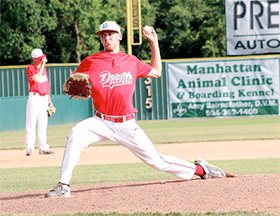
With Major League Baseball (MLB) moving into the second half of the season, it’s an ideal time to talk about how excess fatigue and a lower body muscle weakness may place a pitcher at risk for a shoulder injury.
I’m not talking about MLB pitchers. Rather, I am referring to all those 11 to 16-year-old pitchers you see playing year round on summer leagues, travel squads or on school teams. These kids are competing year round with little recovery time between events.
Based on my years of experience working for numerous MLB teams and players, we would never handle a professional pitcher in the manner our young pitchers are managed today. The pro’s would start burning out as the adolescent pitchers are doing now.
The mechanics of pitching involves a kinetic chain of events – the wind-up, stride, arm cocking, arm acceleration, arm deceleration and follow through.
Research, which appeared in the June 2015 issue of the Journal of Strength and Conditioning Research (JSCR), defines the kinetic parameters of the pitching motion as follows: “elbow flexion (bend), shoulder external rotation (cocking), shoulder abduction (away from body), shoulder horizontal adduction (coming home), lead knee flexion, forward trunk tilt, lateral trunk tilt, pelvis and upper torso angular velocity.”
Based on a research study, Changes in Pitching Biomechanics in the Late – Inning in Taiwanese High School Baseball Pitchers, in the same JSCR journal, “if a pitcher remains in a fatigued state for a long period, changes in the pitching mechanics may occur, resulting in a greater risk of injury.”
In this study, sixteen male high school pitchers with at least five years of fastball pitching experience were evaluated with 3-D motion analysis and Biodex isometric testing pre and post simulated bullpen practice – using a 100 maximum pitch count as a barometer of fatigue. Of note, most recommendations call for a 75-80 pitch count, as a cut off to pull the adolescent pitcher for safety reasons.
It was determined that, “the results presented in this study indicate that late-inning pitching induces a measurable change in the pitching mechanics.” And, “at least three days of rest are required for the recovery of the shoulder internal rotators and shoulder external rotator muscles after 100 pitches.”
In a separate study, “Gluteus Medius and Scapula Muscle Activation in Youth Baseball Pitchers,” in the same journal, Auburn University School of Kinesiology researchers selected twenty 11-12 year old pitchers, who had pitching experience, free from injury the past six months, and a coaching recommendation to test the, “muscle activation (using muscle surface electrodes) of a primary pelvic stabilizer, gluteus medius, and scapular stabilizers during baseball pitching.”
After a 10-minute warm up, the participants, “were instructed to throw maximum effort 4-seam fastballs for strikes over a regulation distance (46ft.14.02m) to a catcher. The fastest of the 4-seam fastballs (using a JUGS radar gun) for strikes was selected for analysis.”
The gluteus medius (glut med), which is part of the buttocks, provides rotation of the thigh outward from the center of the body. Based on my experience in professional baseball and tennis, the glut med is very much misunderstood, as to its relevance on the success or failure, if not strengthened, on the pitching and serving motion. And, it can have a profound effect on either stabilizing or destabilizing (if weak) the scapula – the shoulder blade that connects the humerus bone of the arm to the collarbone.
The study concluded that, “training and rehabilitation programs should consider focusing on gluteus medius activation in both dynamic and stabilizing activities.”
In this case — pitching.
Parents of young pitchers need to recognize that pushing these young athletes into a fatigued state, along with the failure to properly use their legs as their power source will potentially lead to an injury.
Mackie Shilstone, a regular contributor to NOLA.com | The Times-Picayune, has been involved in the wellness sports performance industry for nearly 40 years. He is currently a fitness consultant to Serena Williams and has trained numerous other professional athletes and consulted a litany of professional sports franchises. He is St. Charles Parish Hospital’s fitness and wellness expert.